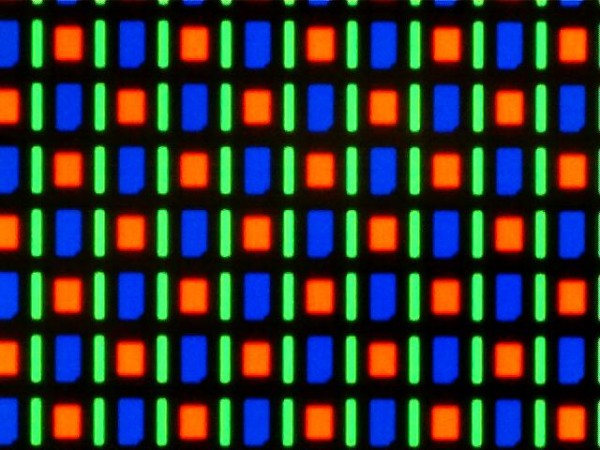Blue LED Makes Electronics More Efficient
| Marc Maligalig | | Sep 25, 2014 09:28 AM EDT |
(Photo : Wikimedia Commons)
Paul G. Goebel Professor of Engineering Stephen Forrest and his colleagues from the University of Michigan have lengthened the functional lifetime of blue organic light-emitting diodes by a factor of 10, potentially leading to lower power consumption of big-screen televisions and longer battery lives of smartphones.
Like Us on Facebook
In OLED displays, which are found in high-end TVs and smartphone displays, blue OLEDs are used in the trio of basic colors to produce images. The improvement leads to increased efficiencies, from about five percent to 20 percent or better, of blue OLEDs in the devices in the future.
OLEDs are the latest and greatest in television technology, letting television sets be very thin or even curved, with a wider range of viewing angles and minimal blurring of moving objects. Each pixel in the "RGB" displays contain red, blue, and green modules that give off light at varying degrees of brightness to produce any color in the human imagination.
However, not all OLEDs are created equal. Phosphorescent OLEDS, nicknamed PHOLEDs, generate light via a mechanism that has quadrupled efficiency compared to the fluorescent OLEDs. Red and green PHOLEDs are already embedded in new televisions, as well as LG and Samsung smartphones, but the blue ones are still fluorescent.
"Having a blue phosphorescent pixel is an important challenge, but they haven't lived long enough," said Forrest.
He and his team demonstrated the prototype PHOLED in 1998 and the first blue one in 2001.
With the new data, Forrest and his colleagues hope that the longevity of the blue OLEDs is about to change. Efficient blues would extend the battery lives of smartphones and make great cuts in the power consumption of big-screen TVs.
The improvement in the technology would keep the blue from dimming ahead of its red and green counterparts over time.
TagsAMOLED, OLED, LED, Light-emitting diode, TV display, Display, Screen, PHOLED, Blue, green, red
©2015 Chinatopix All rights reserved. Do not reproduce without permission
EDITOR'S PICKS
-

Did the Trump administration just announce plans for a trade war with ‘hostile’ China and Russia?
-

US Senate passes Taiwan travel bill slammed by China
-

As Yan Sihong’s family grieves, here are other Chinese students who went missing abroad. Some have never been found
-

Beijing blasts Western critics who ‘smear China’ with the term sharp power
-

China Envoy Seeks to Defuse Tensions With U.S. as a Trade War Brews
-

Singapore's Deputy PM Provides Bitcoin Vote of Confidence Amid China's Blanket Bans
-

China warns investors over risks in overseas virtual currency trading
-

Chinese government most trustworthy: survey
-

Kashima Antlers On Course For Back-To-Back Titles
MOST POPULAR
LATEST NEWS
Zhou Yongkang: China's Former Security Chief Sentenced to Life in Prison

China's former Chief of the Ministry of Public Security, Zhou Yongkang, has been given a life sentence after he was found guilty of abusing his office, bribery and deliberately ... Full Article
TRENDING STORY

China Pork Prices Expected to Stabilize As The Supplies Recover

Elephone P9000 Smartphone is now on Sale on Amazon India

There's a Big Chance Cliffhangers Won't Still Be Resolved When Grey's Anatomy Season 13 Returns

Supreme Court Ruled on Samsung vs Apple Dispute for Patent Infringement

Microsoft Surface Pro 5 Rumors and Release Date: What is the Latest?










